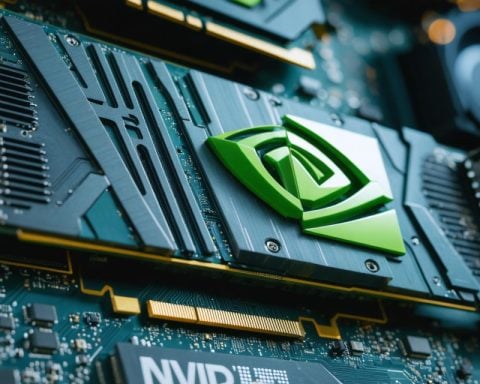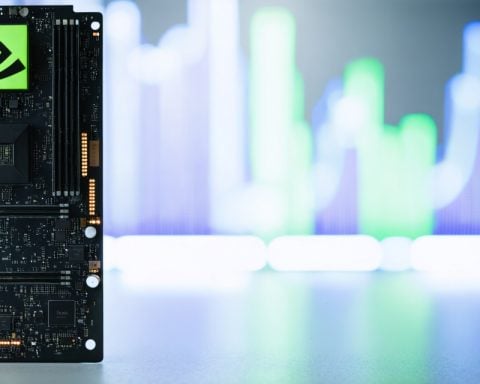A New Vision for Urban Transportation
Honda’s recent showcase at the CES event is stirring up conversations beyond just autonomous technology, hinting at a potential transformation of urban landscapes through self-driving innovations. The automotive giant, renowned for pushing technological boundaries, is leveraging Level 3 autonomous driving to not just enhance vehicles but to also potentially redesign city living entirely.
The Key Player: Helm.AI
Central to Honda’s strategy is its collaboration with Helm.AI, a tech-savvy partner that has been pivotal since 2018. Rather than collecting real-world data through risky road tests, Helm.AI utilizes simulations to craft robust AI training programs. This method allows Honda to streamline their systems to effectively manage complex driving scenarios, laying the groundwork for more profound changes in urban mobility.
Advantages Beyond the Wheel
The implications of Honda’s autonomous technologies are far-reaching. Such vehicles could lead to a drastic reduction in traffic congestion. By communicating with smart city infrastructure, they offer potential for smoother traffic flows, which means less idling and fewer greenhouse gas emissions. The emphasis on electric vehicles furthers this environmental agenda, aligning Honda’s pursuits with global sustainability goals.
Transformative Urban Design
Self-driving cars also open up discussions on urban design. Cities of the future could witness a shift from extensive parking facilities to green spaces and community areas, as reliance on private car ownership dwindles amidst rising popularity of shared, autonomous fleets. This wave of change hints at healthier, more sustainable, and aesthetically pleasing urban environments.
As we anticipate Honda’s future technological deployments, the company’s innovations present promising possibilities for a cleaner and more efficient future in urban living. The real test lies in navigating the regulatory frameworks to unlock these potentials while ensuring broad societal benefits.
The Future of Urban Mobility: Embracing Autonomous Innovation
Honda’s bold stride into the world of autonomous vehicles, unveiled during a recent CES event, signals a transformative shift in urban transportation. By leveraging Level 3 autonomous driving technologies, Honda is not only enhancing vehicle efficiency but is also reimagining the fabric of urban environments. The collaboration with Helm.AI—a strategic partner since 2018—marks a significant pivot from traditional data collection methods to advanced AI simulations, promising to redefine urban mobility.
Environmental Impact of Autonomous Transportation
Central to the conversation is the potential environmental implications of embracing self-driving technology. Traditional vehicles contribute significantly to urban air pollution through greenhouse gas emissions and fuel consumption. Honda’s development of autonomous electric vehicles presents a tangible solution to mitigate these effects. By facilitating smoother traffic flows through smart infrastructure communication, these vehicles can drastically reduce congestion, leading to less idling time and associated emissions.
Electric autonomous vehicles, devoid of combustion engines, align closely with global sustainability objectives aimed at reducing carbon footprints. As urban areas become denser and populations swell, the need for eco-friendly public transportation systems becomes imperative. Honda’s innovations pivot the transportation narrative towards a cleaner future by minimizing individual car ownership and promoting shared, electric autonomous fleets.
A Vision for Sustainable Urban Design
Beyond environmental benefits, Honda’s investment in autonomous technology heralds a new era in urban design. The potential decline in private vehicle ownership and the rise of shared autonomous fleets could dramatically alter city landscapes. Expansive parking facilities that dominate cityscapes may be repurposed as vibrant green spaces or community hubs, enhancing urban aesthetics and promoting public well-being.
Such transformations align with the future of humanity’s ongoing quest for sustainable urban centers that cater to environmental, social, and health needs. Access to increased green spaces supports biodiversity and provides urban dwellers with more recreational areas, leading to improved air quality and mental health benefits.
Economic and Societal Paradigms
Economically, the shift toward autonomous transportation promises efficiency and productivity gains. Reduced traffic congestion translates to less time spent commuting and more time dedicated to productive pursuits. Additionally, it opens avenues for innovation in service delivery, logistics, and transportation-related industries. Ensuring equitable access to these technologies will be crucial for broad societal benefit, promoting inclusivity in urban mobility.
Looking forward, Honda’s pioneering steps in autonomous vehicle technology could catalyze further innovations, leading to smarter, more connected cities that seamlessly integrate transportation with the fabric of daily life. Navigating the regulatory landscape, however, remains a critical challenge. Ensuring safety, privacy, and ethical standards will require collaborative efforts across sectors and stakeholders.
In shaping the future of urban transportation, Honda’s endeavours underscore a commitment to a cleaner, more efficient, and sustainable future. As society embraces these changes, the potential for urban living to become more harmonious with environmental and human needs grows, paving the way for a promising urban evolution.
Revolutionary Urban Mobility: How Honda’s Innovations Could Redesign Cities
The Evolution of Autonomous Vehicles
Honda’s venture into autonomous vehicle technology is poised to reshape not just the automotive industry but the very fabric of urban living. With their showcase at the recent CES event, Honda hints at a new era where self-driving vehicles redefine city landscapes. The collaboration with Helm.AI has been instrumental in this transformation, ensuring that AI programs are robust and capable without the traditional risks associated with real-world testing.
Unpacking the Advantages: More Than Just Self-Driving
Pros and Cons of Autonomous Urban Design
Pros:
– Reduced Traffic Congestion: Honda’s autonomous vehicles can dynamically interact with smart infrastructure, optimizing traffic flow and reducing congestion.
– Environmental Impact: With an emphasis on electric vehicles, there is potential for significant reductions in greenhouse gas emissions, aligning with global sustainability targets.
– Urban Transformation: Less need for parking spaces could lead to more green areas and community spaces, enhancing urban living quality.
Cons:
– Regulatory Challenges: Navigating the regulatory environment poses a significant hurdle to widespread adoption.
– Societal Adaptation: Transitioning communities to accept and fully integrate autonomous technologies could meet with resistance.
How Honda’s Innovations Align with Global Trends
Sustainability: As nations push for greener technologies, Honda’s focus on electric and autonomous vehicles aligns perfectly with these trends, suggesting a future where such vehicles can play a key role in climate change mitigation.
Innovative Urban Design: The rise of shared and autonomous fleets could mean fewer cars on the road, allowing cities to repurpose land currently used for parking. This could lead to innovative urban planning choices, including the development of additional parks and communal areas.
The Future Landscape: Predictions and Expectations
Industry analysts predict that by 2030, fully autonomous vehicles will become a common sight in major cities, provided technological and regulatory challenges are addressed. Honda’s advancements suggest that traffic systems, urban mobility, and even city planning will evolve together, leading to smarter, more sustainable cities.
Navigating Security and Compatibility Issues
As Honda’s vehicles increasingly interact with smart infrastructure and other cars, the need for robust cybersecurity measures becomes acute. Ensuring that data is safely transmitted and received without interference is crucial. Compatibility with existing city infrastructures will also require close collaboration with urban planners and government bodies.
Conclusion
Honda’s work with Helm.AI marks a significant step towards a future where urban spaces are cleaner, greener, and more efficient. While there are challenges to overcome, the potential benefits of such innovations are immense. Future innovations could fundamentally change how we live and move within our cities.
For more insights on Honda’s breakthrough projects, visit Honda.











